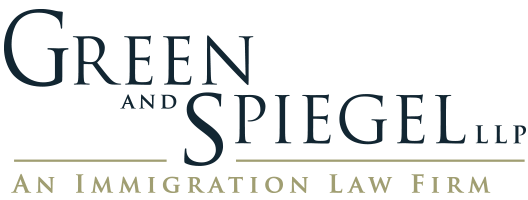On August 20, 2019, the U.S. Department of State announced a revised reciprocity schedule for France for the E visa classification. Specifically, the validity period of E-1 and E-2 visas issued to French foreign nationals has been drastically reduced to a mere 15 months. In the past, French E visas were issued with validity periods of five years (or 60 months). This policy takes effect on August 29, 2019.
Treaty Trader (E-1) and Treaty Investor (E-2) visas are for citizens of countries with which the United States maintains treaties of commerce and navigation. E-1 visas are for applicants wishing to come to the U.S. to “engage in substantial trade,” while E-2 visas are for applicants who seek to come to the U.S. to “develop and direct the operations of an enterprise in which you have invested a substantial amount of capital.”
Per the statement posted on the DOS website, the reduction in E visa validity time from 60 months to 15 months has been instated as a response to “treatment afforded to U.S. citizens by the Government of France.”
To date, there has been no recent change in the duration of visas granted to US citizens by France. The French “Passport Talent” scheme covers 10 immigration categories, a handful of which closely align with the E visa designation. The Passport Talent visa for entrepreneurs and investors is most often issued for a period of four-years. Thus, for now, it is unclear what exactly is meant by “treatment afforded to U.S. citizens,” as there is no direct or correlative change in the French reciprocity schedule.
It is also worth noting that the exact E visa validity period varies widely from country to country based on the reciprocity schedule with that country. In Switzerland, for example, E visas are issued with a validity period of 2 years. For Egyptian or Bangladeshi foreign nationals, E-2 visas have a validity period of only 3 months. In the majority of countries with which the United States has a qualifying trade agreement, including most of our EU allies, E visas are issued in 5-year increments.
Although 15 months is by no means the shortest period of validity currently associated with E visas (as noted above), the new policy marks a significant shift in the U.S. approach to French visa applicants, particularly in terms of fostering financial investment via French entrepreneurial endeavors in the U.S. Indeed, the overall goal and spirit of the E visa classification centers around fiscal growth, investment in the U.S. economy, and cross-cultural exchange.
More specific information regarding E visa validity periods (by country) can be found in the Department of State’s reciprocity schedule, here. Please note that, as of the time of this blog post, the reciprocity tables for France have not yet been updated to reflect the new change.
Our offices will be monitoring this new policy and its effects closely. We are hopeful that this change is temporary and that the French and US governments can once again align on investment and trade-based visas classifications. Jonathan Grode (U.S. Practice Director of Green and Spiegel), in his role as President of the French-American Chamber of Commerce will personally be attempting to garner more information regarding this change and future alterations to this important visa classification for French nationals doing business in the United States. If you have questions regarding the E visa classification, or the potential impact of this policy, please do not hesitate to contact us.



